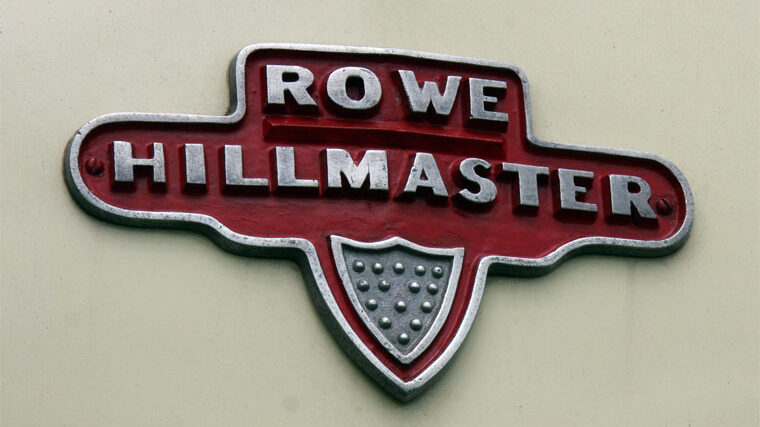Cornwall’s hall of fame embraces clotted cream to surf, spectacular scenery and a tin-mining history which has bequeathed a legacy of lonely, long defunct engine houses hauntingly scattered across its landscape.
Historian Dave Moss looks back at a little known part of Britain’s motor industry in Cornwall and dedicates this special feature to bus lover Denis Chick, who retires in May as PR Director of Vauxhall.
More recently it has enjoyed television exposure through the Poldark series, but few on the landward side of the Cornish boundary at the River Tamar are aware of another part of its past, its motor industry.
Though never comparable in size, range or dynamism to Britain’s Midlands-based motor manufacturing industry, approaching one hundred small and independent enterprises have been involved in making powered road vehicles in Cornwall.
With much mining history in the region, the local story of mechanical engineering ingenuity stretches back long before motor vehicles, topped by the innovative efforts of Richard Trevithick, developer of the high pressure steam engine towards the end of the eighteenth century.
Well over a hundred years later, the Cornish motor industry has mostly concerned itself with non-commercial road vehicles, though an interesting exception was conceived by Maurice Rowe, owner of Rowes Garage in Dobwalls, just outside Liskeard.
Rowes’ opened as a general garage in 1932, with taxis and ultimately local coach tours later added to its automotive repertoire. It was growing demand for coach trips that led to the establishment of M.G. Rowe (Motors) Ltd, operating from a purpose-built unit on the Lostwithiel road close to the village.
Though its just 40 miles from coast to coast at Cornwall’s widest point along the Devon border, the county contains some interesting topography. In the years after World War II, this presented various power, driveability and passenger comfort challenges for smaller coach operators like Maurice Rowe, obliged to run whatever vehicles they could find, for Cornish – and indeed Devon – roads tended to be narrow, unevenly surfaced, and peppered with steep gradients. MG Rowe Motors was originally founded to produce a coach chassis to meet these near-unique challenges head-on.
Work began on development of a chassis intended to be light and lively, comfortable and economical in 1952; the result weighed in at 2 tons 18cwt (2947kg) complete with spare wheel and full 33 gallon (150ltr) fuel tank.
However its then-conventional leaf-sprung front engine-rear drive layout was hardly innovative, and a 17 ft (5.1m) wheelbase, whilst helping passenger comfort, didn’t do much for manoeuvrability: the quoted turning circle was 65ft.(19.8m) The chassis featured a vertically arranged 5.4 litre Meadows 4DC330 diesel engine, offering 85 bhp at 2,200 rpm and 239 lb-ft of torque.
Power was routed via a 14 inch Borg and Beck clutch to a 5 speed Meadows manual gearbox including an overdrive top gear, and driving a 6.661:1 ratio hypoid rear axle. With 8.25-20 inch tyres, a 56mph (90kph) maximum speed was claimed, with a super-low first gear specified to allow fully laden starts on 1 in 4 inclines – ensuring those Cornish hills would present few problems.
Early in 1954, the Rowe Hillmaster coach was born when this prototype chassis was fitted with a Whitson-built 38-seater body, its narrower than average 7ft 6inch (2.9m) width chosen to cope with the west country’s many narrow lanes.
By then however, the major packaging and refinement advantages of underfloor engines were increasingly clear to coach operators, spurring Maurice Rowe and his lead engineer William Yeo to apply Cornish ingenuity, and adapt their chosen Meadows engine to run horizontally – despite initial manufacturer scepticism.
A modified chassis was rapidly developed to incorporate it, and by September 1954 a chassis price of £1750.0s 0d was announced, and a Whitson-bodied, underfloor-engined Rowe demonstrator was produced. Meadows subsequently incorporated the engine changes developed by Rowe and Yeo, and it became the first company’s first diesel unit specifically marketed for horizontal use in commercial vehicles.
Truck development
Though Rowe’s first vehicles were coaches to meet local needs, a goods vehicle with up to 8 tons payload evolved from the original vertical-engine chassis. Using the same Meadows engine and five-speed gearbox, it was equipped with heavier leaf springs, and an uprated Girling hydraulic braking system including a Clayton Dewandre servo, but – as with the coach – power steering was not installed.

The first prototype was equipped with a Jennings of Sandbach-sourced platform body, its cab featuring a wrap-around curved windscreen reminiscent of the famous ERF Klear-View design – designed by Jennings in 1952. The new underfloor-engined coach and the 8-tonner were both at the Earls Court commercial motor show in September 1954.
If this seems a promising start for a Cornish company poised for major success in coach and truck building, it was actually a false dawn, the creation of which was turned into a specialism by Cornwall’s eternally-nascent motor industry.
Designing and building commercial vehicles was an expensive business, coachbuilders everywhere were closing as demand declined – and the conditions which made coaches at home on narrow winding and hilly west country roads weren’t exactly common elsewhere.
Five, possibly six Rowe Hillmaster coaches were built between 1954 and March 1959, when the receivers were called in. One went to the Plymouth-based Millbrook Steamboat and Trading Company, three were ordered by the Morlais Motor Co of Merthyr Tydfil, and presumably Rowes themselves used the other two. None appear to have survived.
Hillmaster trucks proved more successful, with around 115 units built from a range which eventually offered payloads from 6 to 14 tons, plus a 15 ton tractor unit for articulated applications.
The company continued operating in receivership, bolstered by an order in October 1959 for fifty 8 ton tipping vehicles from Cheshire-based Andrew Foster Transport. The last examples were built during 1962, with five currently known survivors in the UK – one of them a rare tractor unit.
Another is undergoing restoration by Devon-based transport company Gregory Distribution, and a handful were exported – so other Rowe trucks may yet turn up.
The Hillmasters may be long gone, but the site where Rowes garage was founded over 80 years ago is still operating at Dobwalls, part of the thriving Rowe group which holds Honda and Suzuki franchises at branches across Cornwall.
© Words Dave Moss & images by Grace’s Guide
References
A heartwarming story about the survival of old Hillmaster trucks is recounted here:
https://web.archive.org/web/20130723054233/www.heritagecommercials.com/news/cornish-gold
A brief story of the development of the Rowes dealer Group as it is today can be found here:
Some details about the Rowe Hillmaster brand can be found here:
http://www.gracesguide.co.uk/Rowe
A very brief biog on Maurice Rowe can be found here – listed alphabetically under ROWE:
https://www.gracesguide.co.uk/1959_Who%27s_Who_in_the_Motor_Industry:_Name_R
Some details about the now defunct Morlais Motor Services, including lots of pictures of ageing coaches, is here:
http://www.alangeorge.co.uk/morlaisservices.htm
A version of the remarkable but ultimately sad story of Richard Trevethick’s contribution to steam engine history is covered here:
https://en.wikipedia.org/wiki/Richard_Trevithick
Book:
Rowe Hillmaster, Cornwall’s Commercial Vehicle, Peter Tutthill (Paperback, 72pp, believed out of print).
Dave Moss has a lifetime connection with the world of motoring. His father was a time-served skilled engineer from an age when car repairs really meant repairs: he ran his own garage from the 1930's to the 60's, while Mum was the boss's secretary at a big Austin distributor. Both worked their entire lives in the motor trade, so if motor oil's not in Dave's blood, its surely a very close thing.
Though qualified in Electronics, for Dave it seemed a natural step into restoring a succession of classic cars, culminating in a variety of Minis. Writing and broadcasting about these, and a widening range of motoring matters ancient and modern, gathered pace in the 1970's and has taken over since. Topics nowadays range across the modern motoring mainstream to the offbeat and more arcane aspects of motoring history, and outlets embrace books, websites national and international magazines, newspapers, radio programmes, phone-ins and guest appearances. Spare time: hard graft on the garage floor attending to vehicles old and new. Latest projects: that 1968 Mini Cooper S has finally moved again after 30 years, and when the paint is finished, the 1960 Morris Mini 850 will also soon be ready for the road again...

